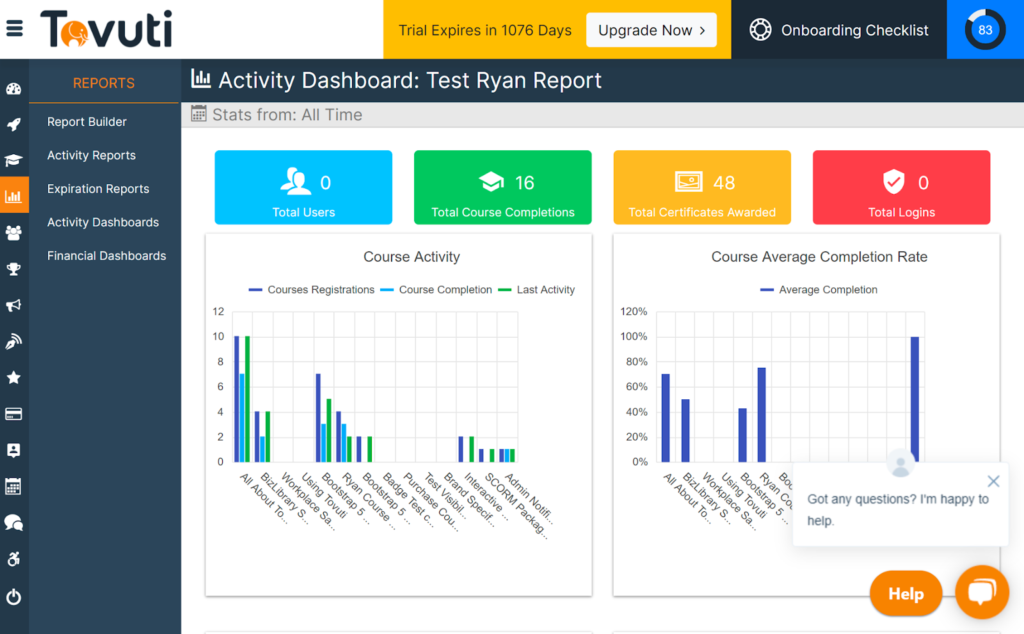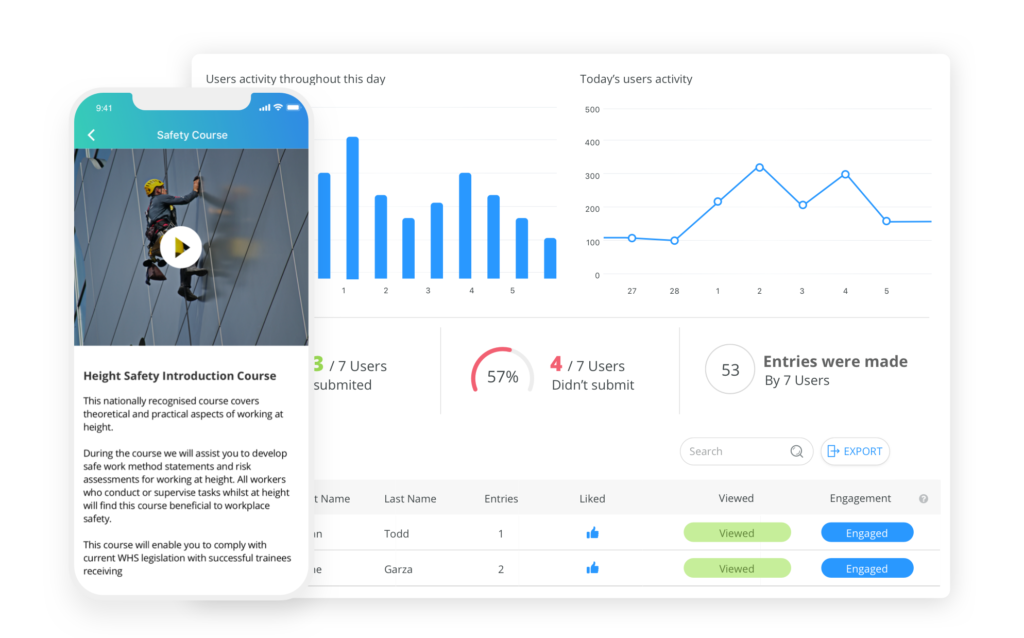Employee training tracking software is a crucial tool in modern organizations, ensuring efficient management and oversight of training initiatives. From tracking progress to optimizing performance, this software plays a pivotal role in enhancing employee development.
As we delve deeper into the intricacies of this software, we uncover key features, implementation strategies, benefits, and best practices that can revolutionize how organizations approach training and development.
Introduction to Employee Training Tracking Software
Employee training tracking software is a tool used by organizations to monitor, manage, and analyze the training activities of their employees. This software allows companies to keep track of training schedules, attendance, progress, and performance of their workforce in a centralized system.
Using employee training tracking software is essential for organizations to ensure that employees receive the necessary training to enhance their skills and knowledge. It helps in identifying training needs, tracking compliance with regulations, and measuring the effectiveness of training programs. By utilizing this software, companies can streamline their training processes, improve employee engagement, and ultimately boost productivity.
Examples of Popular Employee Training Tracking Software
- 1. TalentLMS: A cloud-based learning management system that offers a user-friendly interface and customizable features for tracking employee training.
- 2. Cornerstone OnDemand: Provides a comprehensive platform for managing employee development, training, and performance evaluation.
- 3. SAP Litmos: Offers a scalable solution for delivering, tracking, and reporting on employee training programs across different devices.
- 4. Docebo: A learning management system that enables organizations to create and deliver personalized training content while tracking employee progress.
Key Features of Employee Training Tracking Software
Employee training tracking software comes with a variety of essential features that are designed to streamline the process of managing and tracking training programs effectively. These features not only help in keeping track of employee progress but also in ensuring that training goals are met efficiently. Let’s explore some of the key features of employee training tracking software:
1. Centralized Dashboard
Employee training tracking software typically offers a centralized dashboard where administrators can view and manage all training activities in one place. This feature allows for easy access to important training metrics, progress reports, and upcoming training sessions.
2. Customizable Training Plans
Another important feature of employee training tracking software is the ability to create customizable training plans tailored to the specific needs of employees. This feature allows administrators to assign relevant courses, set deadlines, and track completion progress for each employee.
3. Automated Notifications, Employee training tracking software
Employee training tracking software often includes automated notification features that send reminders to employees about upcoming training sessions, deadlines, or new courses. This helps in ensuring that employees stay informed and engaged in their training programs.
4. Reporting and Analytics
Reporting and analytics tools are crucial features of employee training tracking software that provide valuable insights into training effectiveness, employee performance, and areas that may require improvement. These tools help in evaluating the impact of training programs and making data-driven decisions.
5. Integration Capabilities
Many employee training tracking software solutions offer integration capabilities with other HR systems, learning management systems (LMS), or third-party tools. This feature enables seamless data transfer, improves efficiency, and enhances the overall training experience for employees.
6. Compliance Management
Compliance management features in employee training tracking software help organizations ensure that employees receive mandatory training on topics such as safety regulations, diversity, and harassment prevention. This feature is essential for maintaining regulatory compliance and mitigating risks.
Overall, employee training tracking software offers a comprehensive set of features that enable organizations to effectively manage, track, and optimize their training programs for employee development and organizational growth.
Implementation of Employee Training Tracking Software

Implementing employee training tracking software is a crucial step in ensuring that employees receive the necessary training and development. This process involves setting up the software, tracking employee progress, and deploying it successfully in the organization.
Setting Up the Software for Tracking Employee Training Progress
- Choose the right software: Select a training tracking software that aligns with the organization’s needs and objectives.
- Customize the software: Tailor the software to fit the organization’s training programs, workflows, and reporting requirements.
- Import employee data: Input employee information into the system to track their training progress effectively.
- Define training goals: Establish clear training objectives and milestones to monitor employee development.
- Assign training modules: Allocate specific training courses or modules to employees based on their roles and responsibilities.
Tips for a Successful Deployment of Training Tracking Software in an Organization
- Provide training and support: Offer comprehensive training to employees on how to use the software effectively.
- Communicate the benefits: Clearly communicate the advantages of using the software for tracking training progress to encourage employee engagement.
- Set clear expectations: Define the expected outcomes and results of using the software to motivate employees to actively participate in training.
- Monitor progress regularly: Keep track of employee training progress and provide feedback to ensure continuous improvement.
- Collect feedback: Gather input from employees on their experience with the software to make necessary adjustments and enhancements.
Benefits of Using Employee Training Tracking Software

Employee training tracking software offers a wide range of benefits for organizations looking to enhance their training programs and improve overall employee performance and productivity. By utilizing this software, companies can effectively track and manage employee training activities, ensuring that employees receive the necessary skills and knowledge to excel in their roles.
Increased Efficiency and Organization
- Centralized Training Data: Employee training tracking software allows organizations to centralize all training data in one platform, making it easier to access and manage training records.
- Automated Processes: The software automates various training processes such as scheduling, reminders, and notifications, saving time and reducing manual errors.
- Improved Compliance: With built-in compliance features, the software helps organizations ensure that employees complete required training courses, reducing the risk of non-compliance.
Enhanced Employee Performance
- Personalized Learning Paths: Employee training tracking software enables organizations to create personalized learning paths for employees based on their skills gaps and career goals, leading to improved performance.
- Real-time Feedback: Managers can provide real-time feedback on employee training progress, identify areas for improvement, and offer support when needed, ultimately boosting performance levels.
- Continuous Learning Culture: By offering continuous learning opportunities through the software, organizations can foster a culture of learning and development that drives employee growth and performance.
Real-life Examples of Organizations Benefiting from Employee Training Tracking Software
One example of an organization that has benefited from using employee training tracking software is XYZ Corporation. By implementing the software, XYZ Corporation was able to streamline its training processes, improve employee engagement, and enhance overall performance levels across the organization. Additionally, ABC Company saw a significant increase in employee productivity after adopting employee training tracking software, as employees were more motivated and equipped with the necessary skills to perform their roles effectively.
Best Practices for Utilizing Employee Training Tracking Software
Implementing employee training tracking software is just the first step towards ensuring effective training programs within your organization. To fully maximize the potential of the software and enhance employee development, it is essential to follow some best practices.
Regularly Update Training Records
- Ensure all employee training records are accurately updated in the software system.
- Regularly review and verify the completion status of training modules to track progress.
- Set reminders for employees to complete required training to maintain compliance.
Utilize Reporting and Analytics Features
- Generate customized reports to analyze training data and identify trends.
- Use analytics tools to track employee performance and assess the effectiveness of training programs.
- Utilize insights from reports to make data-driven decisions for future training initiatives.
Create Structured Training Programs
- Develop a detailed training curriculum with specific learning objectives for each module.
- Assign training paths based on job roles and skill levels to ensure relevant and targeted learning.
- Track progress through milestones and assessments to measure employee development.
Final Conclusion

In conclusion, employee training tracking software stands as a cornerstone for fostering a culture of continuous learning and growth within companies. By embracing this technology and leveraging its capabilities effectively, organizations can unlock the full potential of their workforce and drive success in the ever-evolving business landscape.
